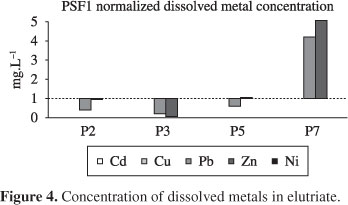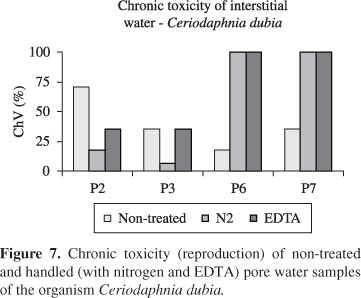The weight-of-evidence - WOE approach was used to assess the environmental impact of sediments contaminated by metals in the São Francisco river and one of its tributaries, Consciência creek, both affected by anthropic activities, in the region of Três Marias (Minas Gerais/Brazil). The assessment provided support to a risk management decision. The WOE was based on bulk metal analysis, AVS-SEM assays, elutriate tests, ecotoxicity assays, benthic community assessment and a comparison for the reference area. Brazilian legislation and other available literature were used as criteria to evaluate the lines of evidence. All samples, except for the reference area, presented some contamination. However, geochemical testing for bioavailability studies showed that toxicity is unlikely as suggested by the chemical results. Ecotoxicity and benthic structure studies provided further information to support decision making. Metal acid volatile sulfide formation mechanisms were identified, which can eventually attenuate metal toxicity observed. The removal of active sources of contamination (for example, from tailings dumps) associated with Monitoring Natural Recovery could be sufficient to eventually lessen the risk of the biota in São Francisco river sediments.
weight of evidence; contamination; sediments; São Francisco river














